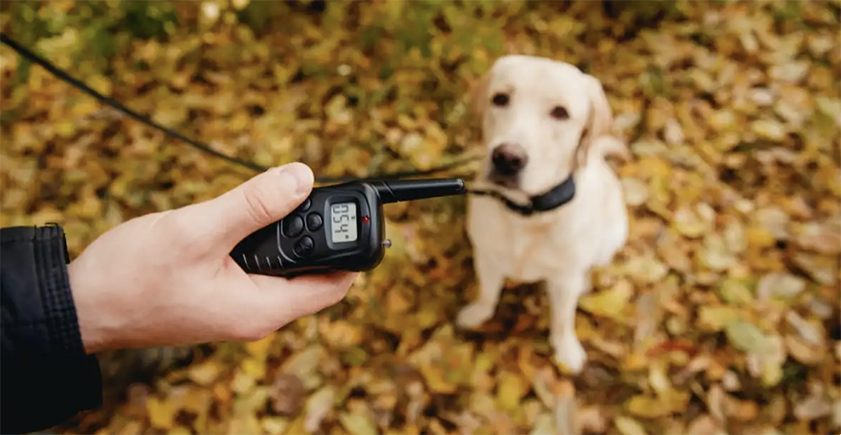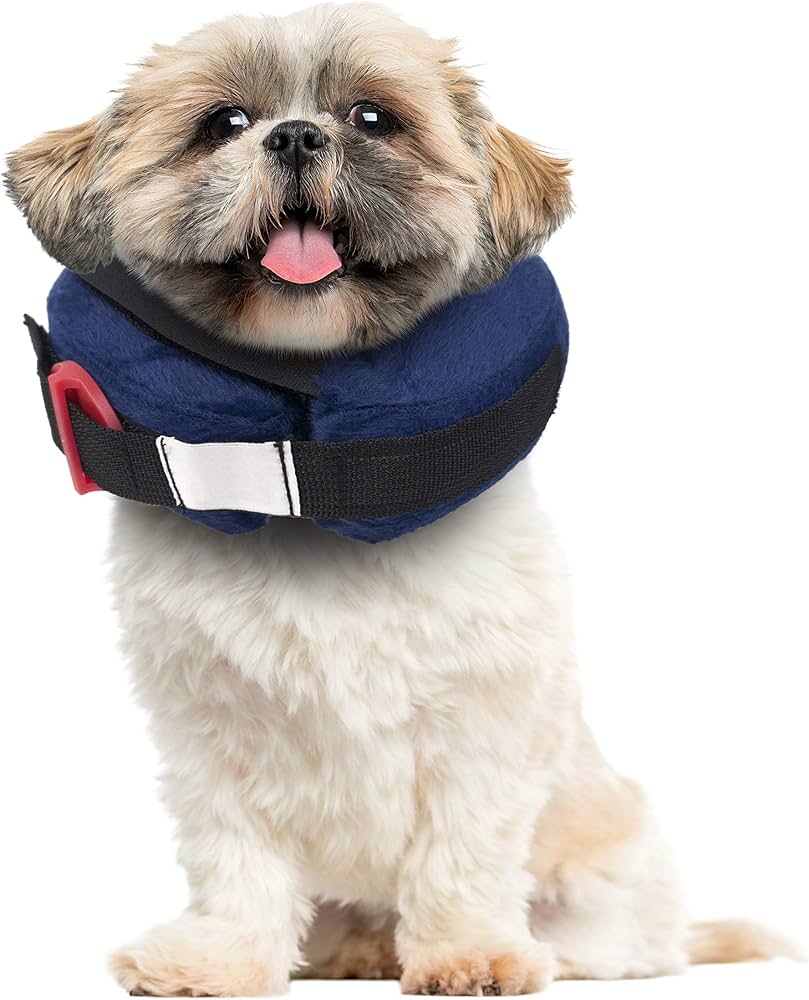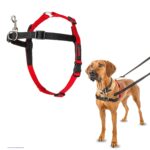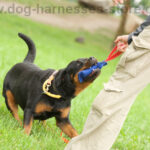Can Collars Affect Your Dog’s Behavior? Understanding the Impact on Your Pet
Meta Description:
Explore how collars can affect your dog’s behavior. Learn about the risks of certain collars and discover positive reinforcement alternatives for better training outcomes.
When it comes to training and managing your dog, collars are one of the most common tools used by pet owners. However, the question remains: can collars affect your dog’s behavior? The answer is yes. While collars can be useful for control and training, they also have the potential to impact your dog’s behavior in both positive and negative ways. The type of collar you use and how it’s applied plays a significant role in shaping your pet’s emotional and psychological well-being.
In this article, we’ll explore the different types of collars that are commonly used for training and discuss the potential effects they have on your dog’s behavior. We’ll also dive into positive reinforcement training techniques that provide a more humane and effective alternative. By the end of this guide, you’ll have a better understanding of how to choose the right collar for your dog and how to promote healthier behavior through positive methods.
Negative Effects of Certain Collars
While collars can serve as a training aid, certain types can have detrimental effects on your dog’s behavior and emotional health. Understanding these potential risks is crucial for making the right choice for your pet’s well-being.
Shock Collars: The Emotional Impact on Dogs
Shock collars are designed to correct undesirable behavior by delivering an unpleasant shock or vibration to your dog. However, research has shown that shock collars can lead to increased anxiety, fear, and aggression in dogs. Approximately 70% of dog owners believe that these collars negatively affect their pets’ mental well-being, creating an environment of fear rather than fostering trust and understanding.
Key Negative Impacts of Shock Collars:
- Increased anxiety: Dogs often associate the shock with fear, making them more anxious.
- Fear-based compliance: Dogs may follow commands to avoid discomfort rather than out of understanding.
- Escalation of aggression: Shock collars can escalate aggressive behavior, especially if the dog associates the shock with a threat.
While shock collars might result in temporary compliance, they do not encourage healthy learning or long-term behavioral changes. Instead of using punishment, positive reinforcement methods are recommended to create lasting behavior modifications.

ALT text: Shock collars are controversial due to their negative effects on a dog’s behavior and mental state.
Choke and Prong Collars: Long-Term Behavioral Consequences
Similar to shock collars, choke and prong collars rely on discomfort to train dogs. These collars apply pressure around the dog’s neck when the dog pulls or misbehaves. Over time, this can lead to long-term behavioral issues such as increased aggression, compulsive behaviors, and ongoing fear. Studies have linked these collars with compulsive actions and excessive anxiety in dogs, making them less ideal for creating a positive and healthy learning environment.
Key Risks of Choke and Prong Collars:
- Aggression: Dogs may grow increasingly aggressive, associating discomfort with the presence of other dogs or people.
- Compulsive behaviors: The discomfort caused by the collar can lead to repetitive behaviors, such as excessive barking or pacing.
- Health concerns: These collars put pressure on sensitive areas of the neck, potentially causing long-term physical damage.
Tip: It’s essential to understand that using collars that rely on pain and discomfort does not build a healthy relationship between you and your dog. Instead, positive training methods help build trust and encourage the behavior you want to see.
Positive Reinforcement Alternatives: Training Without Punishment
Rather than using collars that induce discomfort, positive reinforcement training techniques focus on rewarding your dog for desirable behavior. This approach encourages your dog to repeat good behaviors through praise, treats, or toys. Positive reinforcement is proven to be more effective and humane than punishment-based training.
Benefits of Positive Reinforcement Techniques
Positive reinforcement has been shown to foster a stronger bond between pets and their owners, leading to more effective behavior modification. By rewarding your dog when they exhibit the desired behavior, you are helping them understand what they should do, rather than simply avoiding negative outcomes.
Key Benefits of Positive Reinforcement:
- Encourages desired behavior: Rewarding your dog for good behavior makes them more likely to repeat it.
- Strengthens the bond: Positive reinforcement fosters a trusting relationship between you and your dog.
- Reduces stress and anxiety: No pain or discomfort is involved, which helps keep your dog calm and happy during training.
Why Positive Methods Work Better for Your Dog’s Well-Being
Positive reinforcement not only helps correct undesirable behaviors, but it also improves your dog’s emotional state. Dogs trained using positive methods are less likely to develop fear, anxiety, or aggression. By focusing on rewarding your dog for making the right choices, you promote an environment of trust and happiness, which is essential for their overall well-being.
Key Reasons Positive Reinforcement Works:
- Stress-free learning: Dogs learn faster and more effectively when they are motivated by rewards.
- Better long-term results: Training based on trust and reward creates lasting behavior changes.
- Promotes a positive emotional state: Dogs trained with positive reinforcement tend to be more confident and less fearful.
Internal Link Suggestion:
In the next section, we’ll discuss how to choose the right collar for your dog’s specific behavioral needs and how to ensure safety, comfort, and effectiveness in your training.
This concludes the first half of our article on can collars affect your dog’s behavior. By understanding the potential negative impacts of certain collars and the advantages of positive reinforcement, you can make informed decisions that promote your dog’s health and well-being.
Call to Action:
Ready to find a safe, effective collar for your dog? Explore the best collars and harnesses for your pet and use the discount code mytopdeals10 to save 10% on your purchase today!
Choosing the right collar and training technique can have a lasting impact on your dog’s behavior. By prioritizing positive reinforcement and avoiding collars that rely on discomfort or fear, you can ensure a happier, healthier relationship with your pet.
4. Choosing the Right Collar for Your Dog’s Behavioral Needs
Main Keyword: Can Collars Affect Your Dog’s Behavior?
When selecting a collar for your dog, it’s crucial to consider not only the design and style but also how the collar will affect their behavior. A well-chosen collar can help with training and behavior management, while an inappropriate one can lead to stress, discomfort, and even behavioral issues.
Factors to Consider When Selecting a Collar
To ensure you choose the right collar for your dog’s needs, there are a few key factors to consider:
- Dog’s size and breed: Different breeds and sizes may require different types of collars. For example, a small dog may need a lightweight collar, while larger dogs may benefit from more robust collars made of stronger materials.
- Behavioral goals: Consider your training goals. If your dog tends to pull on walks, a no-pull harness or martingale collar might be a better choice than a standard buckle collar.
- Comfort: A collar should fit properly and not cause discomfort, chafing, or irritation. Look for collars made of soft materials like neoprene or cotton.
- Safety features: Reflective materials or an ID tag attached to the collar can be beneficial for visibility and identification, especially for night walks.
Recommendations for Safe and Effective Collars
- Flat collars: These are the most common and come in various styles and materials. They are ideal for dogs that don’t have behavioral issues and are used primarily for identification.
- Martingale collars: These are ideal for training dogs, especially those with a tendency to pull. They provide gentle control and prevent choking without causing harm.
- No-pull harnesses: If your dog is prone to pulling, a no-pull harness can help reduce strain on their neck and prevent discomfort. These are especially helpful for dogs with respiratory issues or those prone to neck injuries.
- Adjustable collars: Ensure the collar is adjustable to fit snugly but comfortably around your dog’s neck.
Tip: If you’re training your dog, always consider using a positive reinforcement approach, which pairs well with any collar or harness.
5. Positive Behavior Reinforcement: The Key to Healthy Dog Training
As we’ve discussed, shock collars, choke collars, and prong collars can have negative impacts on your dog’s behavior, mental well-being, and health. The alternative to these discomfort-based tools is positive reinforcement, which is not only more humane but also more effective in the long term.
How Positive Reinforcement Encourages Desired Behavior
Positive reinforcement is the process of rewarding your dog for performing desired behaviors. Rewards can include treats, praise, or toys, and the goal is to increase the likelihood of your dog repeating those behaviors. This method strengthens the bond between you and your pet, creating a more trusting and cooperative relationship.
Benefits of Positive Reinforcement:
- Strengthens behavior: When your dog is rewarded for good behavior, they are more likely to repeat it.
- Builds trust: Your dog learns to associate training with positive outcomes, which fosters a deeper bond.
- Reduces fear and anxiety: Positive reinforcement creates a stress-free environment for learning, unlike punishment-based training methods.
Common Positive Reinforcement Methods
- Clicker training: A clicker is used to mark the desired behavior and followed by a reward. This method is effective in shaping new behaviors.
- Treat-based training: Treats are given immediately after a desired behavior is performed, helping the dog understand what is expected.
- Praise and play: Verbal praise or a favorite game can serve as a reward for well-behaved dogs.
Tip: Positive reinforcement can be applied to any aspect of training, from potty training to leash walking, and is ideal for teaching new tricks.

ALT text: Positive reinforcement training for dogs, where treats and praise are used to encourage good behavior.
6. Conclusion: The Impact of Collars on Your Dog’s Behavior and Training
In conclusion, can collars affect your dog’s behavior? Absolutely. The type of collar you use can have a significant impact on your dog’s emotional state, behavior, and well-being. Collars that rely on discomfort or pain, such as shock collars, choke collars, and prong collars, can lead to anxiety, aggression, and long-term behavioral issues. On the other hand, positive reinforcement methods foster trust, cooperation, and healthy behavioral outcomes for your dog.
Key Takeaways:
- The type of collar can influence your dog’s behavior—both positively and negatively.
- Shock, choke, and prong collars may cause anxiety, aggression, and stress.
- Positive reinforcement training methods are more effective and humane for teaching your dog desired behaviors.
- When selecting a collar, consider comfort, adjustability, and safety features.
By prioritizing positive reinforcement and using collars that ensure your dog’s comfort and safety, you’ll help promote healthier, more desirable behaviors while strengthening your relationship with your pet.
Frequently Asked Questions (FAQs)
What makes Found My Animal products unique?
Found My Animal products are designed with both style and functionality in mind. Their durable collars and harnesses come in a variety of seasonal designs and can be personalized with your pet’s name or other details. These high-quality, comfortable collars are perfect for all types of training, from daily walks to special occasions.
How can I use the discount code mytopdeals10 at checkout?
To use the discount code mytopdeals10, simply visit Found My Animal’s website, select your desired collar or harness, and proceed to checkout. Enter the code mytopdeals10 in the promo code box to receive 10% off your purchase. It’s a great way to save while ensuring your pet’s comfort and safety!
What collar is best for a dog that pulls on the leash?
For dogs that pull on the leash, a no-pull harness is often the best option. These harnesses are designed to distribute pressure more evenly across the chest, making it easier to guide your dog without causing discomfort. Martingale collars are also a good option for preventing pulling while offering gentle control.
Can positive reinforcement help with behavioral issues in dogs?
Yes, positive reinforcement is one of the most effective training methods for addressing behavioral issues. By rewarding desired behavior with treats, praise, or toys, you encourage your dog to repeat those actions, leading to long-term behavior modification without the need for punishment-based tools like shock or prong collars.
Call to Action:
Ready to get the right collar for your dog’s training? Shop now at Found My Animal and use the discount code mytopdeals10 for 10% off your order today!
By choosing the right collar and training method, you can ensure that your dog’s behavior improves in a humane and effective manner, fostering a long-lasting bond based on trust and mutual respect.


